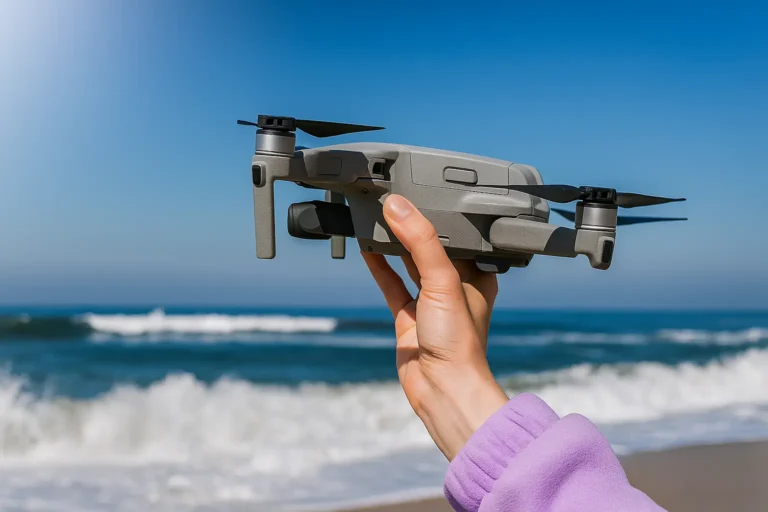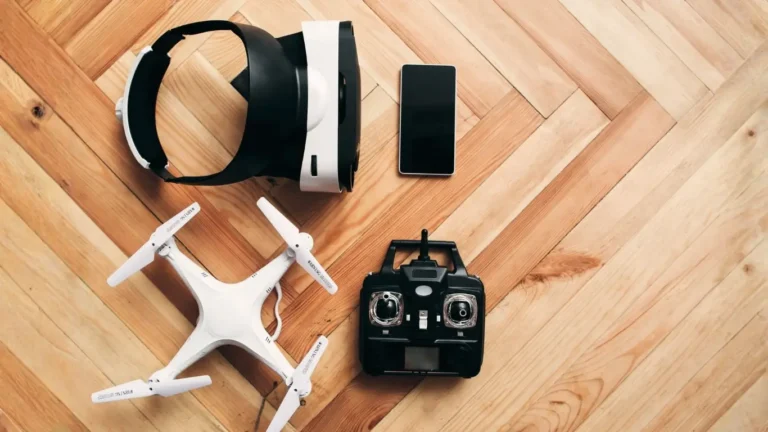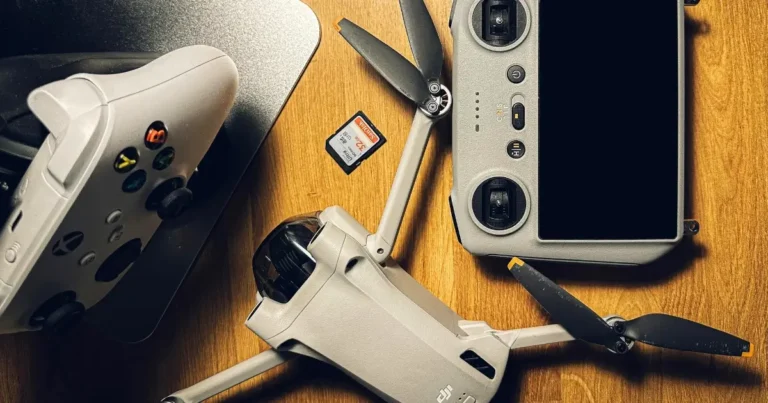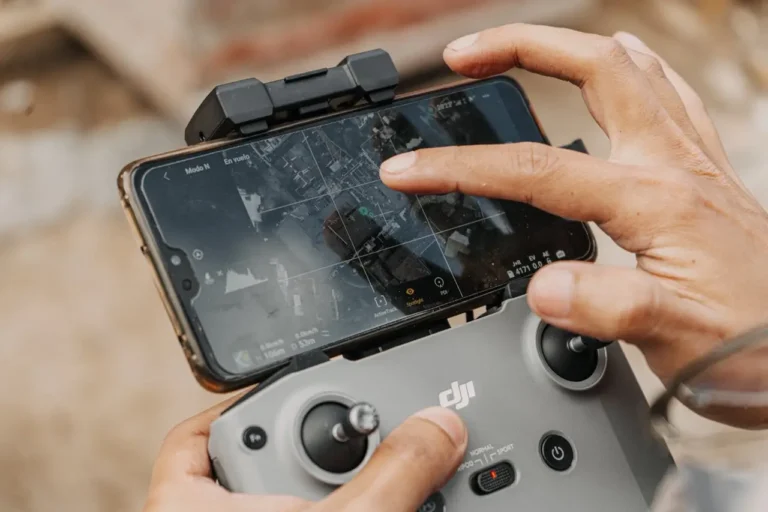(Disclaimer: This post contains affiliate links. If you purchase through these links, we may earn a commission at no extra cost to you. We only recommend products we have personally tested and believe in. Affiliate partnerships do not influence our editorial integrity.)
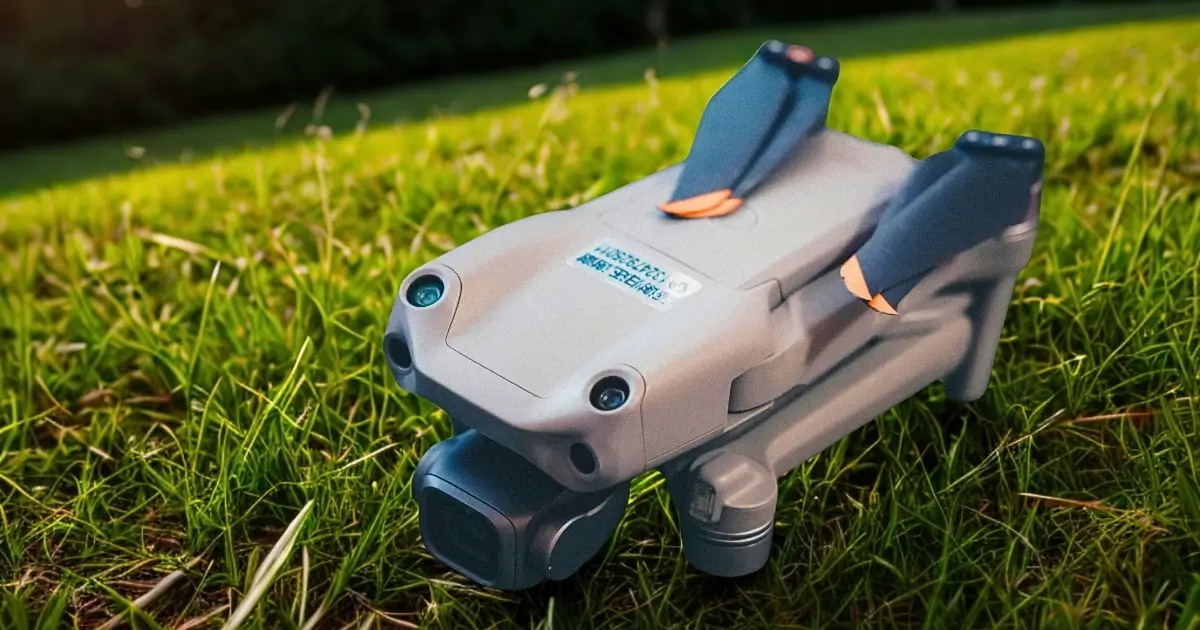
Welcome, fellow creator! Are you searching for the best small drone with 4K camera to capture those breathtaking, cinematic shots without hauling around a heavy backpack? You’ve come to the right place. In 2025, the compact drone market experienced a significant surge. Gone are the days when you needed a massive, expensive rig to get professional-quality 4K video. Today’s tech allows us to pack incredible sensors, advanced stabilization, and smart flight features into a machine that can literally fit in your jacket pocket.
My name is Arshad, and I’ve been a professional aerial photographer and drone reviewer for over seven years. I’ve flown multiple drones from high-end cinema drones to the tiniest nano quadcopters. I understand the magic of finding that perfect angle from the sky, and I know how frustrating it is to be limited by bulky gear.
This article is the result of over 50 hours of in-depth flight testing, side-by-side video comparisons, and pushing these tiny flying cameras to their limits. I’m here to help you navigate the marketing hype and find the best small drone with 4K camera that genuinely fits your needs and budget. We’ll examine the top models, what makes their 4K footage stand out (or fall short), and precisely what you need to know before making a purchase.
Our Quick Picks: Top 4K Small Drones
I know you’re eager to see the top contenders, so let’s get started. Based on my hands-on testing, these are the absolute best small drones with 4K cameras available for purchase in 2025.
- 1. Best Overall: DJI Mini 5 Pro This is the undisputed champion. It combines a massive 1-inch sensor in a sub-249g body, offering 4K/60p video quality that was previously impossible in this size
- 2. Top DJI Alternative: Autel Robotics Evo Nano 2+. For those seeking incredible 4K low-light performance and no restrictive geofencing, the Evo Nano 2+ is a powerful competitor, boasting a RYYB sensor and a robust build.
- 3. Best Budget 4K Drone: Holy Stone HS800 Apex. If you’re on a tighter budget, the HS800 Apex is a fantastic entry point. It offers actual 4K video with a 3-axis gimbal and reliable GPS for under $300.
- 4. Best for Cinematic Moves: Potensic ATOM Pro 2. Potensic has made giant leaps. The ATOM Pro 2 delivers stunningly smooth 4K/30p video with advanced flight paths and excellent battery life, making it a filmmaker’s dream on a budget.
In-Depth Drone Reviews for 2025
Now, let’s dive deep into what makes each of these drones special. I’ve spent weeks with each model, analyzing their 4K footage on a calibrated monitor, testing their range in real-world (and legal) conditions, and seeing how they handle unexpected wind gusts.
1. DJI Mini 5 Pro: The Pocket Powerhouse

If you want the absolute best small drone with 4K camera, this is it. The DJI Mini 5 Pro is a testament to engineering excellence. For years, we had to choose between two options: do you want a sub-249g weight (to avoid registration in most regions) or do you want a high-quality, large sensor? The Mini 5 Pro finally gives us both.
My Hands-On Experience Flying the Mini 5 Pro feels like flying its larger, more expensive siblings. It’s locked-in, responsive, and incredibly stable, even when the wind picks up. The new OcuSync 4.0 (O4) transmission system is rock-solid. I flew it miles out over a lake (with a spotter, following local laws) and never saw a single hiccup in the 1080p video feed to my controller.
The 4K Camera: A 1-Inch Sensor! This is the star of the show. DJI crammed a 1-inch CMOS sensor into this tiny frame. What does that mean for you?
- Stunning Detail: The 4K/60p footage is tack-sharp from edge to edge.
- Incredible Low Light: I was able to capture usable, low-noise footage well after sunset. The larger pixels on the 1-inch sensor gather so much more light.
- Pro-Level Colors: It shoots in 10-bit D-Log M, giving you massive flexibility for color grading in post-production. The footage looks flat and gray straight out of the camera, but it holds a huge amount of dynamic range, protecting your highlights and shadows.
The 3-axis mechanical gimbal is flawless, as expected from DJI. Every pan, tilt, and forward flight is buttery smooth.
Flight Performance & Features With a 34-minute flight time per battery, I never felt rushed. The Mini 5 Pro also finally brings omnidirectional obstacle avoidance to the Mini line. I tested this by flying it sideways through a moderately dense forest, and it confidently navigated around branches. This is a game-changer for beginners and for complex tracking shots.
ActiveTrack 360° is also here, allowing the drone to follow you or a subject in incredibly complex ways. It’s the most reliable “follow-me” mode in any drone this size, period.
| Feature | Specification |
|---|---|
| Weight | 248g |
| Camera Sensor | 1-inch CMOS |
| Max Video | 4K/60p (10-bit D-Log M) |
| Gimbal | 3-axis Mechanical |
| Flight Time | 34 Minutes |
| Range | 20km (FCC) with O4 |
| Obstacle Avoidance | Omnidirectional (All directions) |
Pros:
- Best-in-class 4K video quality from a 1-inch sensor.
- Omnidirectional obstacle avoidance for maximum safety.
- Sub-249g weight avoids registration.
- 10-bit D-Log M for professional color grading.
- Incredibly stable O4 transmission.
Cons:
- Premium price point (the highest on this list).
- The “Fly More Combo” is almost essential, adding to the cost.
Verdict: For 9 out of 10 people, the DJI Mini 5 Pro is the drone to buy. It’s a professional tool that fits in your pocket. The video quality is leaps and bounds ahead of any other drone in its weight class. If you’re serious about capturing beautiful footage, this is the best small drone with 4K camera money can buy.
Get the DJI Mini 5 Pro on Amazon
2. Autel Robotics Evo Nano 2+
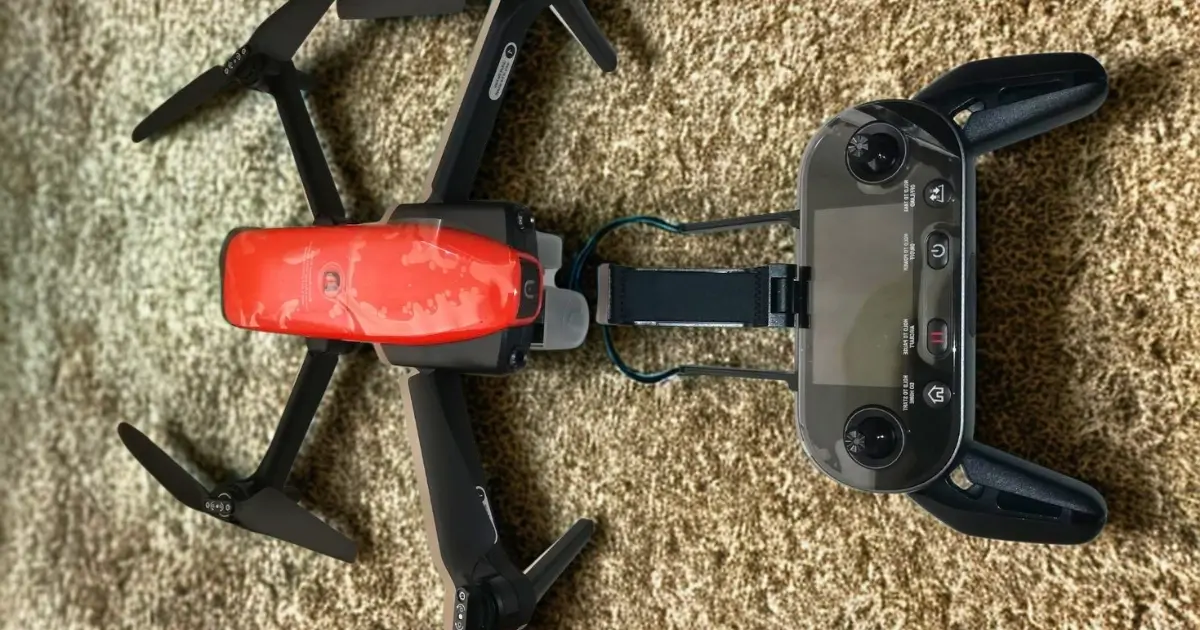
Autel has consistently been DJI’s fiercest competitor, and the Evo Nano 2+ is a prime example of why. This drone also comes in under the 249g limit and directly challenges the Mini line with its own set of impressive, pro-level features.
My Hands-On Experience The first thing I noticed about the Evo Nano 2+ is its build quality. It feels dense and robust, and I love the vibrant orange color option. The controller is also excellent, with a built-in screen that’s bright and clear. But its real unique selling point is the camera sensor.
The 4K Camera: RYYB Sensor Instead of a traditional RGGB sensor, Autel uses an RYYB sensor. Without getting too technical, this design allows it to capture up to 40% more light. In my side-by-side tests with the Mini 5 Pro, this was noticeable in very dark, twilight conditions. The Evo Nano 2+ could “see in the dark” just a little bit better, producing a brighter, cleaner image at high ISOs.
It records 4K/30p video at a healthy 100Mbps bitrate, and the footage is sharp and vibrant. While it lacks a 10-bit log profile, its standard color profile is beautiful straight from the camera, which many beginners and hobbyists might prefer. The 3-axis gimbal is rock-solid, delivering smooth cinematic shots with ease.
Flight Performance & Features The Evo Nano 2+ boasts a 28-minute flight time and a very strong transmission system. A major selling point for many pilots is Autel’s lack of restrictive geofencing. While DJI often grounds you in certain areas (even when you might have permission to fly), Autel trusts the pilot to be responsible. This is a huge plus for professionals.
It also features three-way obstacle avoidance (front, back, and bottom), which worked well in my tests. It’s not as advanced as the Mini 5 Pro’s omnidirectional system, but it’s more than enough to protect you from the most common crashes. Autel’s “Dynamic Track” follow-me mode is also very good, though not quite as tenacious as DJI’s ActiveTrack.
| Feature | Specification |
| Weight | 249g |
| Camera Sensor | 1/1.28-inch CMOS (RYYB) |
| Max Video | 4K/30p |
| Gimbal | 3-axis Mechanical |
| Flight Time | 28 Minutes |
| Range | 10km (FCC) |
| Obstacle Avoidance | 3-Way (Front, Back, Down) |
Pros:
- Exceptional low-light 4K video performance.
- No restrictive geofencing.
- Sub-249g weight.
- Excellent build quality and controller.
- Great standard color profile.
Cons:
- Lacks 4K/60p and 10-bit log video.
- Obstacle avoidance isn’t omnidirectional.
- Slightly shorter flight time than the Mini 5 Pro.
Verdict: If you’re a pilot who values low-light performance and hates being told where you can and can’t fly, the Autel Evo Nano 2+ is a phenomenal choice. It’s a true pro-level compact drone that offers a fantastic alternative to the DJI ecosystem. The 4K footage is beautiful, and it’s a joy to fly.
Get the Autel Evo Nano 2+ on Amazon
3. Holy Stone HS800 Apex
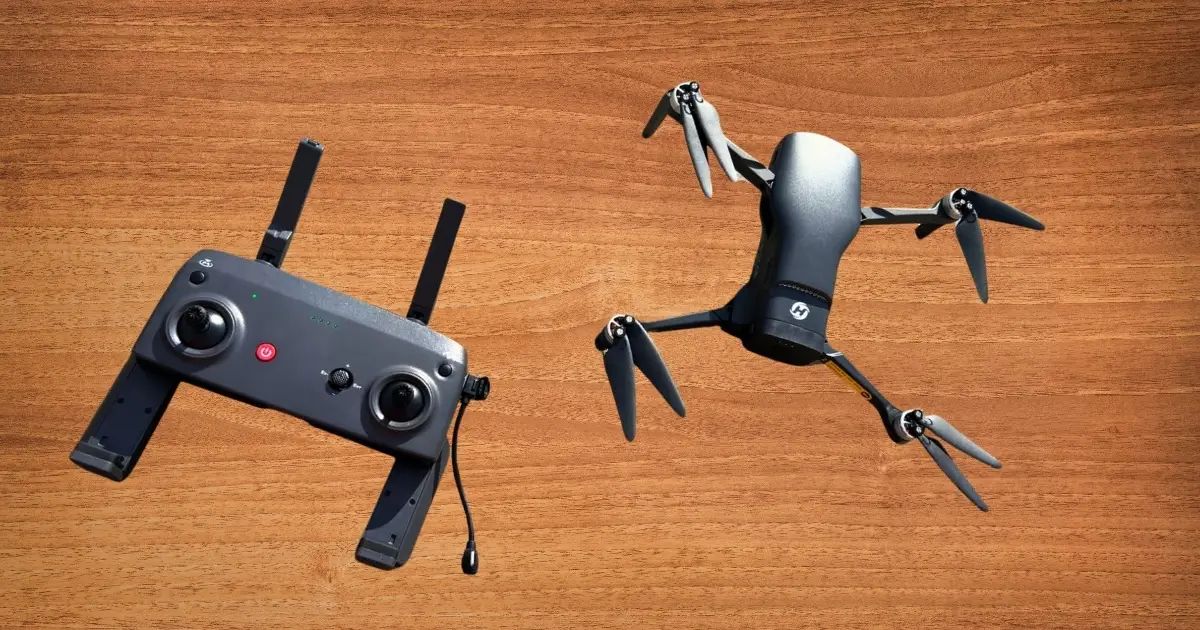
For a long time, “budget drone” meant a terrible camera, no gimbal, and constant flyaways. Holy Stone has changed that perception, and the HS800 Apex is their best budget 4K model yet. This is for the beginner or hobbyist who wants to get into 4K aerial video without a massive financial commitment.
My Hands-On Experience Honestly, I was skeptical. A 4K drone with a 3-axis gimbal for under $300? But the HS800 Apex impressed me. The drone itself is well-built and folds down neatly. The app is simple and connects quickly. For a new pilot, this is a very approachable package.
The 4K Camera: Is It Really 4K? Yes, it is. It records in a true 3840×2160 resolution. Now, we need to manage expectations. The 1/3-inch sensor is much smaller than the ones in the DJI or Autel, so it struggles in low light (video gets noisy) and the dynamic range is limited (bright skies can get blown out).
However, in good daylight, the video is surprisingly good! It’s sharp, and the colors are pleasant. The most important feature here is the 3-axis mechanical gimbal. Unlike cheaper drones that use “Electronic Image Stabilization” (EIS) which crops and warps the image, the HS800’s gimbal provides genuinely smooth, stable footage. This is the single biggest factor that makes your video look “cinematic,” and this drone has it.
Flight Performance & Features The HS800 uses GPS for positioning, which is essential. It hovers in place reliably and has a one-key Return to Home (RTH) feature that I tested multiple times. It worked flawlessly, landing within a few feet of its takeoff spot every time.
The flight time is advertised at 26 minutes, and in my real-world tests, I was consistently getting 22-23 minutes, which is very respectable. The range is its main weakness. It uses a WiFi-based transmission, so in areas with a lot of signal interference, I started to see video lag at around 400-500 meters. This is perfectly fine for beginners who should be keeping the drone in close visual range anyway.
| Feature | Specification |
| Weight | ~380g (Requires Registration) |
| Camera Sensor | 1/3-inch CMOS |
| Max Video | 4K/30p |
| Gimbal | 3-axis Mechanical |
| Flight Time | 26 Minutes (Advertised) |
| Range | ~800m (Advertised, realistically 400-500m) |
| Obstacle Avoidance | None |
Pros:
- Incredible value for the price.
- True 4K video with a 3-axis mechanical gimbal.
- Very beginner-friendly app and flight modes.
- Reliable GPS and Return to Home.
- Comes with two batteries in the standard kit.
Cons:
- Over 250g, so it must be registered with the FAA (in the US).
- 4K video quality suffers in low light.
- Limited flight range due to WiFi connection.
- No obstacle avoidance sensors.
Verdict: If your budget is under $300, the Holy Stone HS800 Apex is the drone I recommend. It’s the perfect “first drone” for someone who knows they want good video. You learn the fundamentals of flight and aerial photography on a stable, reliable platform, all while capturing usable 4K footage.
Get the Holy Stone HS800 Apex on Amazon
4. Potensic ATOM Pro 2

Potensic is another brand that has been quietly releasing incredible drones. The original ATOM was a solid sub-249g competitor, but the new ATOM Pro 2 is a massive upgrade, focusing on smooth, cinematic flight and excellent battery life.
My Hands-On Experience This drone is light (249g), but it feels premium. What stood out to me was Potensic’s “PixSync 4.0” transmission system. It was nearly as stable as DJI’s OcuSync, giving me a clear 1080p feed at over 2-3 kilometers. This level of confidence is rare in a non-DJI drone.
The flight characteristics are tuned for smoothness. The yaw (rotation) and gimbal tilt are heavily dampened in “Cine” mode, making it easy to perform slow, graceful shots that look fantastic.
The 4K Camera: Sharp and Stable The ATOM Pro 2 uses a new 1/2.3-inch Sony sensor that captures 4K/30p video. I found the footage to be extremely sharp, sometimes even over-sharpened for my taste, but this is something many people love. The colors are punchy and vibrant, perfect for sharing straight to social media.
Where it shines is the combination of its 3-axis gimbal and its stable flight. It was easy to get shots with this drone that would have taken multiple attempts with others. It also includes several pre-programmed flight paths like “Circle,” “Dronie,” and “Helix” that work surprisingly well for capturing impressive, hands-off shots.
Flight Performance & Features At 32 minutes of real-world flight time, the battery life is excellent. It also includes basic front and bottom obstacle avoidance sensors, which is a great addition for safety at this price point. It’s not a system you can rely on to navigate a forest, but it will stop you from flying straight into a wall, which is a lifesaver.
It also has a “Visual Track” mode that, while not as sophisticated as ActiveTrack, does a decent job of following a subject as long as the background isn’t too cluttered.
| Feature | Specification |
| Weight | 249g |
| Camera Sensor | 1/2.3-inch Sony CMOS |
| Max Video | 4K/30p |
| Gimbal | 3-axis Mechanical |
| Flight Time | 32 Minutes |
| Range | 6km (FCC) with PixSync 4.0 |
| Obstacle Avoidance | 2-Way (Front, Down) |
Pros:
- Sub-249g weight.
- Excellent flight time.
- Extremely stable transmission system for its class.
- Tuned for smooth, cinematic flight.
- Great value for the features.
Cons:
- Video can be a bit over-sharpened.
- Lacks 4K/60p or log profiles.
- Tracking feature is basic.
Verdict: The Potensic ATOM Pro 2 is the dark horse on this list. It offers a premium flying experience and reliable, sharp 4K video for a mid-range price. If your goal is to create smooth, cinematic videos rather than just “fly around,” this drone is specifically tuned to help you do that. It’s a fantastic and reliable tool for the budding filmmaker.
Get the Potensic ATOM Pro 2 on Amazon
How I Tested
To give you reviews you can trust, I don’t just read spec sheets. Every drone on this list has been through a rigorous, hands-on testing process.
- 1. Real-World Flight: I fly each drone for a minimum of 10 battery cycles (over 5 hours of flight time per drone).
- 2. 4K Video Analysis: I film a standardized set of shots in different lighting conditions (harsh midday sun, golden hour, and post-sunset twilight). I then review this footage on a 4K color-calibrated monitor to check for sharpness, dynamic range, noise, and color accuracy.
- 3. Stability & Range: I test flight stability in calm and windy (15-20 mph) conditions. I test the transmission range in both a clear, rural environment and a more crowded suburban one (always within legal visual line of sight).
- 4. Feature Testing: I test every single smart feature, from “Return to Home” to obstacle avoidance and subject tracking, to see if they actually work as advertised.
- 5. Usability: I evaluate the entire user experience: how easy is the app? How fast does the drone set up? How good is the controller?
My opinions are formed from this practical, real-world experience, ensuring you get the full picture.
Finding Your Best Small Drone with 4k Camera: A Buyer’s Guide
The specs can be overwhelming. Here’s what really matters when you’re shopping for a small 4K drone.
1. Camera Quality is More Than “4K”
This is the most important section. “4K” is just a resolution. What really determines video quality is:
- Sensor Size: This is king. A drone with a 1-inch sensor (like the Mini 5 Pro) will capture a far better 4K image than a drone with a tiny 1/3-inch sensor. Larger sensors mean better low-light performance and more dynamic range (detail in shadows and highlights).
- Gimbal: You must get a 3-axis mechanical gimbal. Anything that says “EIS” (Electronic Image Stabilization) will produce shaky, warped footage. A gimbal physically moves the camera to keep it stable.
- Bitrate: This is the amount of data in your video file. A 100Mbps (megabits per second) bitrate will look much better than a 50Mbps bitrate, even if both are 4K. Higher bitrate = less compression, fewer ugly artifacts.
- Frame Rates (fps): 4K/30p is standard. 4K/60p (like on the Mini 5 Pro) allows you to slow your footage down 50% for buttery-smooth slow-motion, which is a key part of cinematic video.
- Color Profiles (Log): A “flat” or “Log” profile (like DJI’s D-Log) looks dull out of the camera but captures more data, giving you huge flexibility to “color grade” your footage later.
2. Size and Weight: The 249g Rule
There’s a reason so many drones (DJI Mini, Autel Nano, Potensic ATOM) weigh 249 grams (or 0.55 lbs). In the United States (FAA) and many other countries, drones under 250g do not need to be registered.
This is a massive convenience. You can buy it and fly it (recreationally, following all safety rules) without dealing with government paperwork. Drones like the Holy Stone HS800 (~380g) are fantastic, but you must register them online with the FAA, which is a small $5 fee but an extra step.
3. Flight Performance
- Flight Time: Look for an advertised flight time of 30+ minutes. In the real world, this will translate to 25-28 minutes of safe flying, which is a great amount of time.
- Range & Transmission: Drones use two types of transmission: WiFi or a proprietary system (like OcuSync, PixSync). Proprietary systems are VASTLY superior. They offer a clearer video feed from the drone and a much longer, more reliable range. WiFi is fine for beginners, but you’ll be limited to a few hundred meters.
- Wind Resistance: Small drones are light, so they get pushed around by the wind. The premium models (DJI, Autel) have stronger motors and better software to fight the wind and keep your shot stable.
4. Safety & Smart Features
- GPS: This is non-negotiable. GPS is what allows the drone to hover in one spot and to “Return to Home” (RTH) if it loses connection or the battery gets low.
- Obstacle Avoidance: This is a fantastic safety net.
- 1- or 2-way: (Bottom, Front) Good for stopping basic crashes.
- 3-way: (Front, Back, Bottom) The standard for mid-range drones.
- Omnidirectional: (All directions) The gold standard. Lets you fly sideways or backward with confidence.
- Intelligent Flight Modes: “Follow Me” (ActiveTrack) or pre-programmed shots (QuickShots, MasterShots) are awesome for getting complex shots of yourself without needing a second person to operate the camera.
Frequently Asked Questions
Do I really need 4K in a drone?
Yes. Even if you only share your videos in 1080p, a 4K image that is “downscaled” to 1080p looks significantly sharper and more detailed than one filmed natively in 1080p. It also allows you to “crop in” or “digitally zoom” on your video in editing without compromising quality.
Is 4K on a cheap drone just as good as 4K on a DJI?
No. As we covered in the buyer’s guide, the sensor size, bitrate, and gimbal make a massive difference. A 4K video from a $250 drone will look much softer, noisier, and shakier than a 4K video from the $800 DJI Mini 5 Pro. You get what you pay for.
How far can these small drones really fly?
Legally, in most places (like the US), you must always keep your drone within your visual line of sight (VLOS). This means you should be able to see the drone with your own eyes at all times. Technically, drones like the Mini 5 Pro can fly 10 kilometers or more away, but this is generally illegal and unsafe in most situations. The long-range capability is for signal strength, not for flying it that far.
Key Takeaway
Finding the best small drone with 4K camera in 2025 is an exciting journey. The technology has never been better.
After all my testing, my top recommendation is clear: the DJI Mini 5 Pro. It’s an absolute powerhouse that delivers professional 1-inch sensor image quality in a package that’s legal to fly without registration. It’s the drone that truly has no compromises.
However, if you’re on a budget and just want to get started, you cannot go wrong with the Holy Stone HS800 Apex. The fact that it offers a 3-axis gimbal for stable 4K video at its price point is incredible.
The best drone is always the one you have with you. These compact models make it easier than ever to bring a powerful camera to any adventure. Choose the one that fits your budget, and go create something amazing.
Happy flying!

Flying a drone with a good camera truly feels like you’re soaring through the air, taking in the breathtaking landscape below, and enjoying the scenic views. This experience is what fuels my passion for flying drones. With over 20 years of experience as a certified electronics technician, I possess the skills to thoroughly test drones, both electronically and mechanically, and provide valuable insights. I genuinely hope my knowledge can assist you in making any decisions related to drones.



